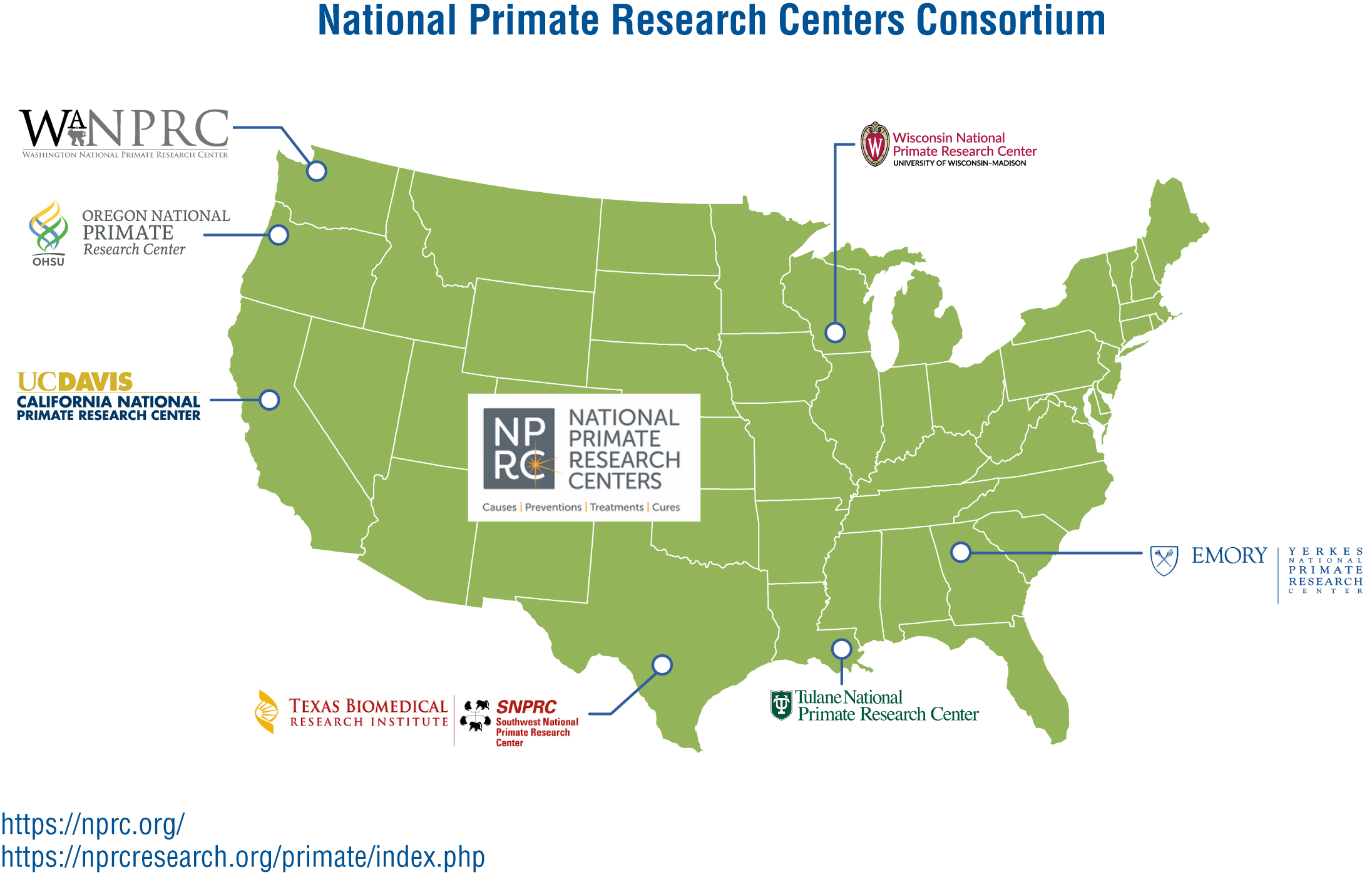Mission The Centers mission is to provide the appropriate environment to support outstanding biomedical research directed towards significant human health issues and nonhuman primate health and biology. The USDA reports comprise information on activities requiring corrective action.
 National Primate Research Centers Nprcs Ohsu
National Primate Research Centers Nprcs Ohsu
Understanding temperament can lead to better individualized care and improved animal welfare.

National primate research center. Causes Preventions Treatments Cures The Livesaving Benefits of Primate Research The Critical Role of Nonhuman Primates in Scientific and Medical Research. Tulane National Primate Research Center is part of a network of seven National Primate Research Centers NPRCs dedicated to improving human health and lives worldwide. The National Primate Research Centers NPRCs are a national network of dedicated teams fighting diseases from Alzheimers to Zika and improving human health and lives worldwide.
2Biostatistics Shared Resource Knight Cancer Institute Biostatistics Bioinformatics Core Oregon National Primate Research Center Oregon Health Science University Portland USA. The CNPRC is an Organized Research Unit of the University of California Davis and part of the National Primate Research Centers Program. The WNPRC is part of a network of seven National Primate Research Centers which conduct biomedical research on primates.
Oregon National Primate Research Center The NPRCs are a national network of dedicated teams conducting and enabling studies that make breakthrough discoveries possible. Research at the CNPRC is leading to new diagnostics therapeutics and clinical procedures that enhance quality of life for both humans and animals. Notifications on the latest report findings can be found here.
As of 2020 the center houses approximately 1600 animals. USDA veterinary inspectors review all areas of animal care and treatment. Of Pediatric General Thoracic Surgery Cincinnati Childrens Hospital Medical Center Nanoparticle-mediated placental.
Stewardship excellence integrity collegiality and people. Division of Neuropharmacology and Neurologic Diseases Yerkes National Primate Research Center Emory University Atlanta GA 30329 United States. The National Primate Research Centers.
The Yerkes National Primate Research Center conducts essential basic science and translational research to advance scientific understanding and to improve human and animal health worldwide. National Primate Research Centers are a network of seven research programs in the United States funded by the National Institutes of Health to conduct biomedical research on primates. 6Yerkes Imaging Center Yerkes National Primate Research Center Emory University Atlanta GA 30329 United States.
Of Physiological Sciences Eastern Virginia Medical School Androgens Promote Fertilization of Primate Oocytes Working with David Abbott PhD. The Wisconsin National Primate Research Center WNPRC is a federally funded biomedical research facility located at the University of Wisconsin-Madison. The CNPRC mission is to improve human health and quality of life through support of exceptional nonhuman primate research programs.
Between 2012 and 2017 four National Primate Research Centers NPRCs participated in a joint research project focused on improving captive primate well-being by collecting and assessing temperament data based on an animals response to novel stimuli. The Southwest National Primate Research Centers mission is to improve the health of our global community through innovative biomedical. In partnership with the National Institutes of Health NIH other government organizations private foundations and private industry NPRCs conduct and enable studies that make breakthrough discoveries of causes.
Then identify its larger taxonomic group loris lemur tarsier New World monkey Old World monkey or ape. Southwest National Primate Research Center receives regular inspections by the United States Department of Agriculture. T he California National Primate Research Center CNPRC is improving health and advancing science with interdisciplinary programs in biomedical research on significant human medical conditions throughout the lifespan.
In partnership with the National Institutes of Health NIH and others the NPRCs conduct and enable studies that make breakthrough discoveries of causes preventions treatments and cures possible. Each center is affiliated with a university or other host institution. 1Division of Neuroscience Oregon National Primate Research Center Oregon Health Science University Beaverton USA.
The National Primate Research Centre of Thailand Chulalongkorn University or the NPRCT-CU has been awarded as FULLY ACCREDITATION from the AAALAC International-Association for Assessment and Accreditation of Laboratory Animal Care International in February 2020. For this primate species or genus describe its geographic distribution and a few anatomical and behavioral traits. CONGRATULATIONS TO OUR 2020-2022 PILOT PROJECT AWARDEES.

